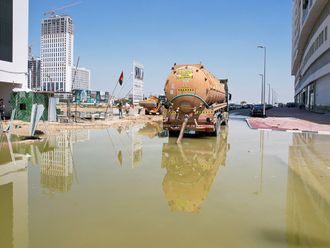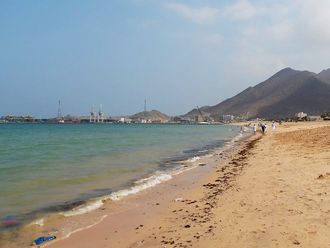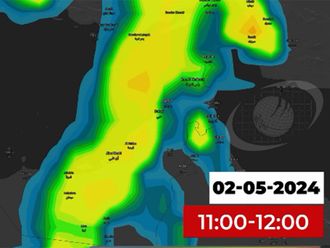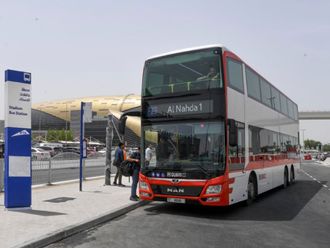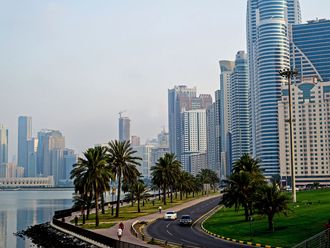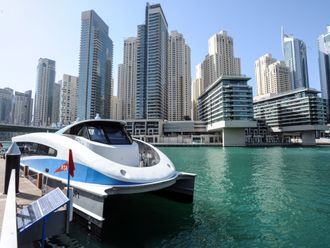There is no chance of a tsunami hitting the UAE, say scientists.
They have, however, warned that the country should prepare for the threat of earthquakes from the active fault line near Dibba.
"There will be no tsunami here as the UAE is outside any danger zone. I can completely rule out this phenomenon.
"Although we are near the Zagros Fault, the UAE is in a relatively calm region and there is no danger of tsunamis," said Dr Mufid Samarai, Professor of Civil Engineering and Director of the Central Laboratory at the University of Sharjah.
He repeated that the recent high tide in UAE waters had nothing to do with the tsunamis in South East Asia.
High-rise buildings are being constructed according to the earthquake code in Dubai, Abu Dhabi and Sharjah, but smaller buildings and houses are in the greatest danger.
"Precautions should be taken to cope with any unexpected disaster and the authorities should ensure lifeline supplies can be provided to affected communities.
"The civil defence, police and hospitals should be capable of handling any big emergency and should be well-equipped. There should also be some scientific research on the issue to analyse the situation," he said.
This would include advanced earthquake and wave monitoring centres connected to satellites.
Dr Azm Al Homoud, a seismologist and Professor of Civil Engineering at the American University of Sharjah, said: "The monitoring centre would cost less than the cost of constructing a high-rise building, but it will help save hundreds of such buildings and thousands of lives."
He said the authorities in the UAE should be prepared for an earthquake in Dibba measuring 5 to 6.5 on the Richter scale.
"The Dibba Fault is active and we recorded an earthquake measuring 2.8 on the Richter scale at 5.22pm on January 11.
"Two other earthquakes were also recorded in Ras Al Khaimah on January 5, including ones at 9.34am and 9.40am at magnitudes of 2.5 and 3.
"There were similarities between the earthquakes in both areas as they were on the Dibba Fault line, which is about 100km long.
"People in Dibba have also felt at least 150 tremors during the past two years, which indicates that there is a major earthquake waiting to happen in the area.
"This fault is capable of producing a major earthquake every 100 years and there has been no major earthquake in the last 100 years."
While he said no one could predict when exactly it would strike, he said it is bound to happen "sooner or later" judging by the scientific study of continual tremors.
These tremors, he said, were felt due to some kind of local tectonic movement on the Dibba Fault, which is connected to the Zagros Fault a major fault on the opposite side of the Arabian Gulf in Iran.
"There is energy in the Dibba Fault that needs to be released and that will cause an earthquake in the area," he said.
"We should develop our own earthquake code, launch awareness program-mes for people, train volunteers and civil defence staff, set up more quake monitoring centres, impose design codes on building construction and check the vulnerability of important buildings, such as hospitals and schools," he said, adding it was a national issue and should be handled at the national level.
"Major damage and casualties happen because of a lack of education and training for such calamities.
"There should be a proper communication network to educate the public on how to react in such a situation.
"A general survey of buildings, such as schools, colleges, hospitals and other important and strategic points should be carried out to strengthen their structure to resist any quake," he said.
Prof Samarai said older buildings and town houses should be properly examined to check their vulnerability to earthquakes.
Dr Al Homoud said there were at least three reasons to take the threat of earthquakes in the UAE seriously.
First, a group of international experts had determined that the hazard in the UAE was approximately the same as that in parts of California, Turkey and Iran.
Second, two faults run through the UAE. One of them runs along the west coast through all the major cities from Abu Dhabi to Ras Al Khaimah. It is not known whether it is active or not.
The second one, which is called the Dibba Fault, enters land near the southern borders of Oman, coming from the north and runs southward to the centre of the Arabian Peninsula.
Thirdly, a quake measuring 5 on the Richter scale occurred in Masafi, about 23km from Fujairah, on March 11, 2002.
There are nine earthquake monitoring centres in the UAE built by the American University of Sharjah.
"We need to advance our earthquake monitoring stations in the UAE as we also need to add more state-of-the-art stations with seismographs and accelerometers connected to satellites."


